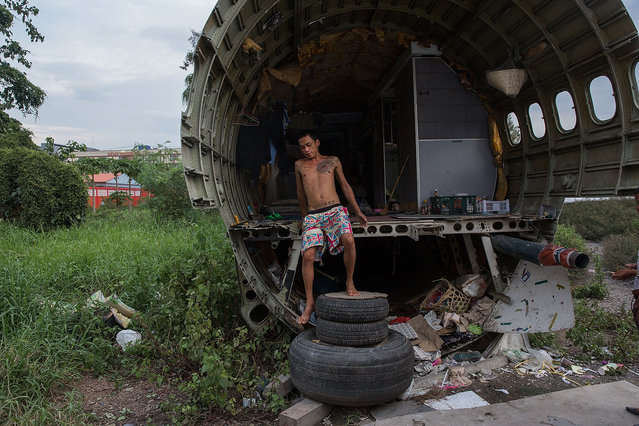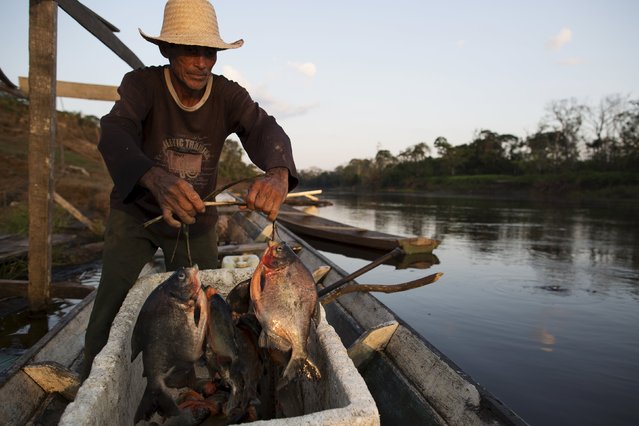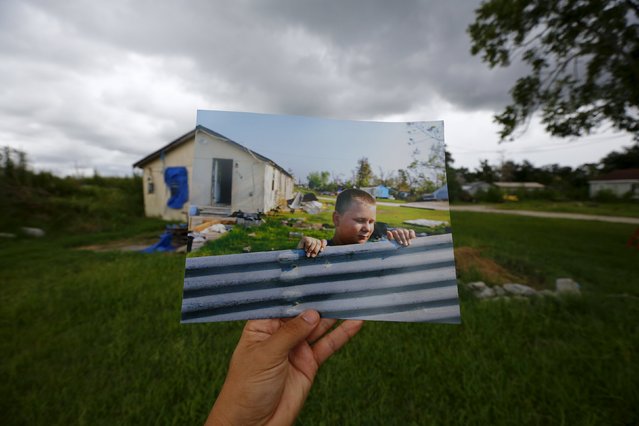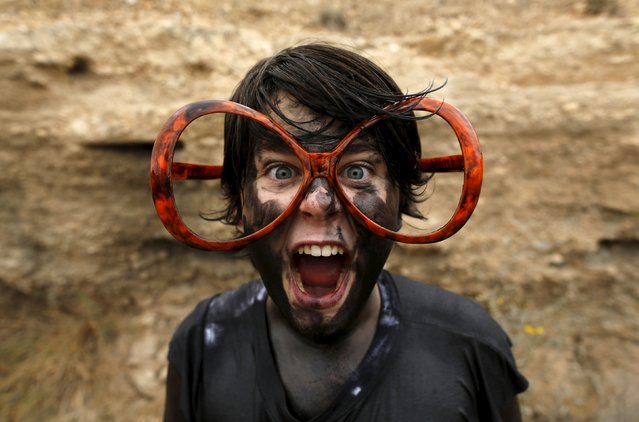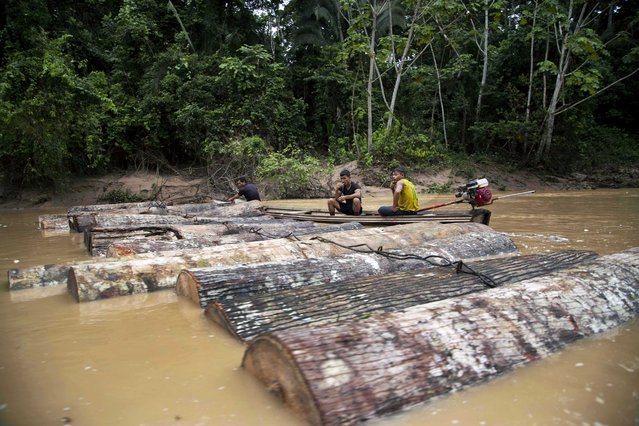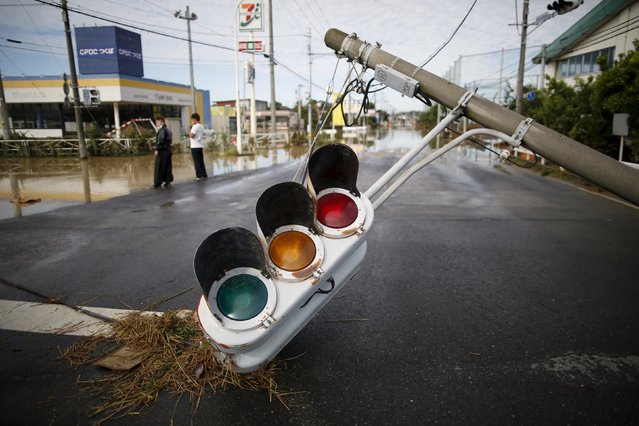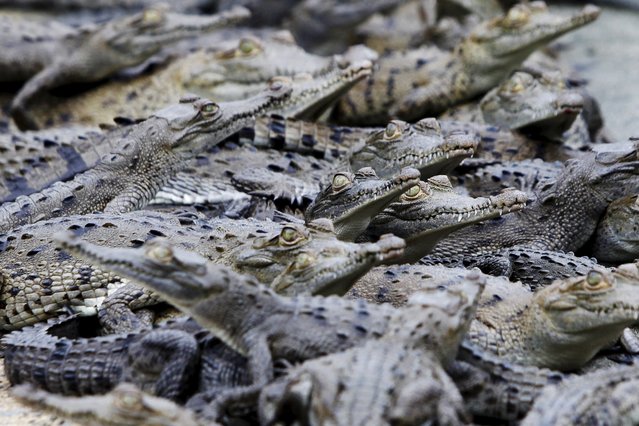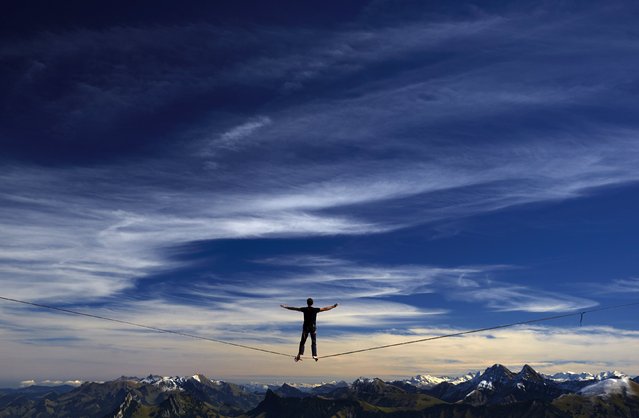
Guillaume Rolland of France stands on the line during the Highline Extreme event in Moleson, Switzerland September 25, 2015. European best slackliners will compete until Sunday on six different lines ranging from 45 metres (148 ft) to 495 metres (1,624 ft). The 495 metres (1,624 ft) line if completed, will be the world record. (Photo by Denis Balibouse/Reuters)
28 Sep 2015 08:05:00,post received
0 comments

